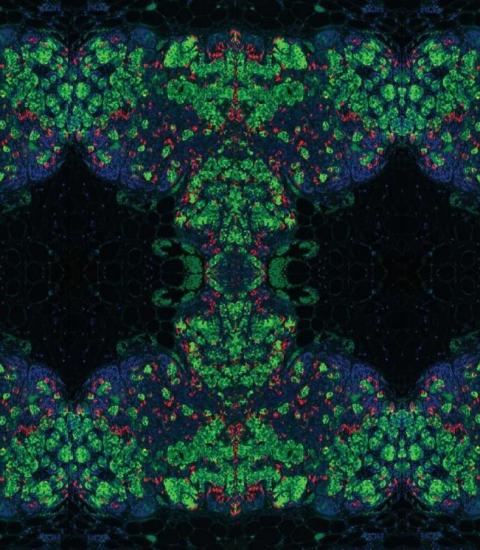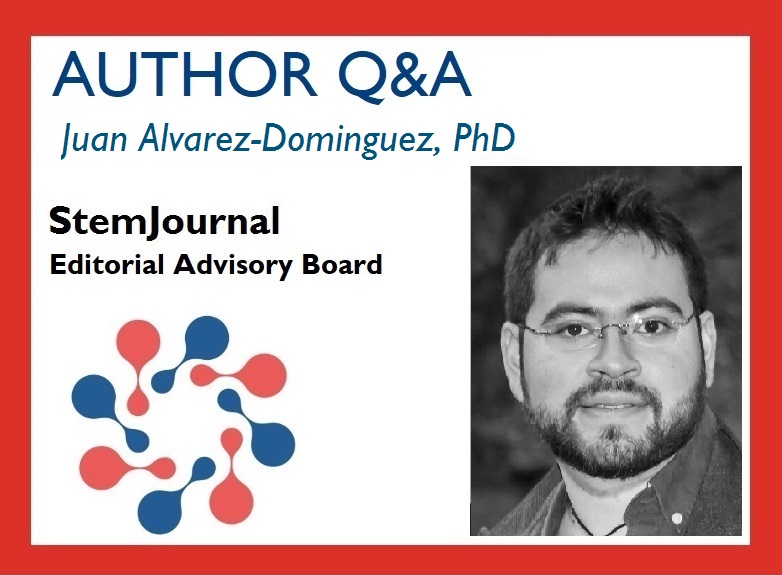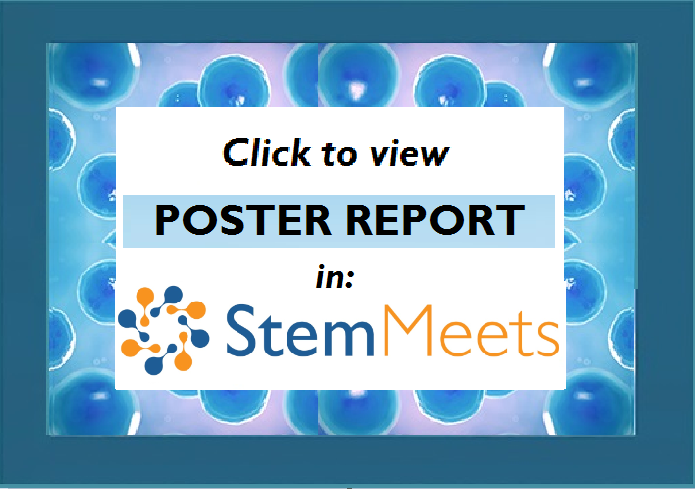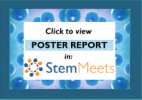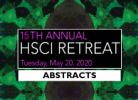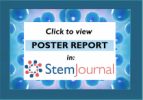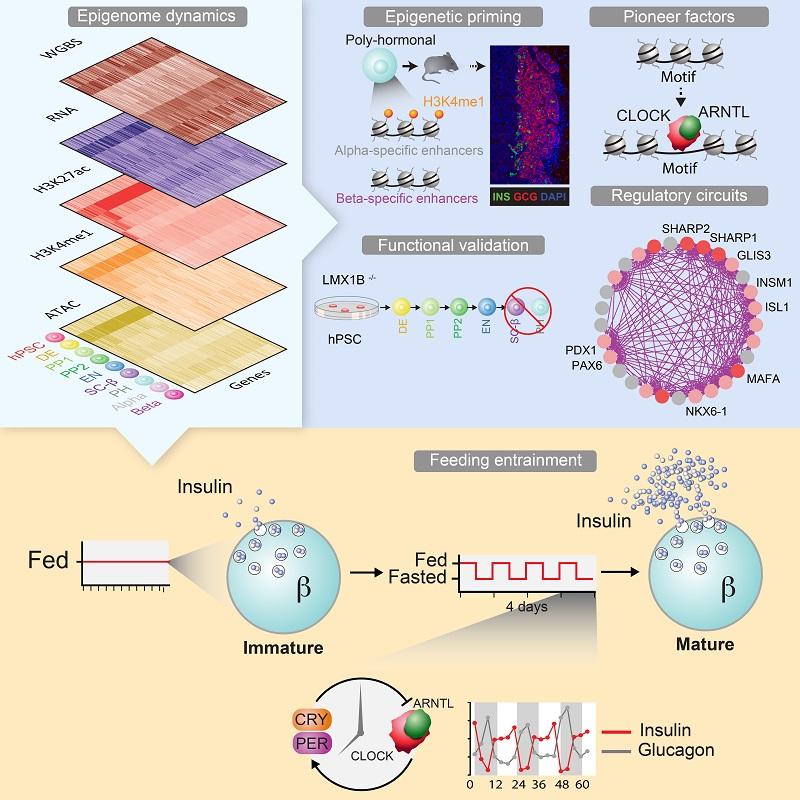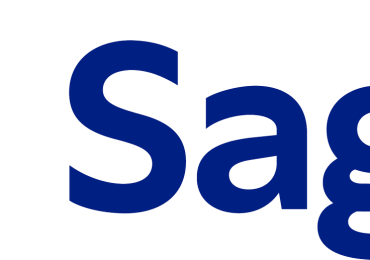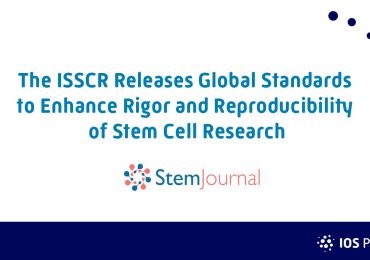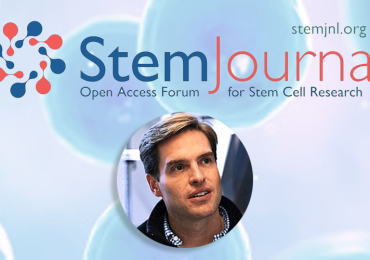Q&A
StemJournal posed some questions to Juan and below you can read his answers:
Q: Congratulations on your (first-ever) poster report being published in StemJournal. How important a vehicle is this type of article with regards to getting the chance to communicate your research in the scientific literature at this stage?
A: I was just talking with a group of graduate students about the importance of storytelling – it is key for turning your data into a publication, for turning that into a compelling research poster or presentation, and for communicating your science to the general public – all of which are very important for disseminating your work. Poster reports are another useful avenue to tell that story to the scientific community and the public at large.
Q: The report looks at maturation methods for stem cell-derived organoids destined for human therapeutics. What was the key outcome and what are your next steps?
A: The key outcome is that, like our tissues during development, organoids need physiological rhythms to reach functional maturity. This carries implications not only for how we use organoids to model human physiology and disease at the bench, but how we may use them to treat diseases in the clinic. “Give your cells meals” is what I tell people now – the notion that physiological rhythms, such as feeding–fasting rhythms, not only accompany but drive tissue maturation. This is counterintuitive: We try to keep cells happy by giving them abundant nutrients, when what they really need is feeding and fasting periods. The next step is to explore – how general is this paradigm? Can it be used to advance the maturity of heart organoids, brain organoids, etc.?
Q: The study refers to islet transplantation being a possible cure for insulin-dependent diabetes; is diabetes a key focus in your research? Do you wish to share any other areas that you are interested or might be the future focus for later research studies?
A: Diabetes is a key focus area because it afflicts over 400 million people on the planet. Yet we know very little about human islet cells become they functionally specialized or “mature”. The finding that the circadian pathway is important for developing and maintaining islet maturity, emerging from mine and other very recent studies, prompts fundamental questions that will be the focus of my future studies. For example, how does islet-level physiology entrain to circadian rhythms? How is nutrient status relayed to the clock in the nucleus? And how do circadian disturbances lead to islet and systemic metabolic dysfunction?
Q: Our new StemMeets section provides researchers with the option to communicate materials from conferences and workshops; so Poster Reports and Abstracts in the first instance. In fact, stemjnl.org now offers a single point-of-access for stem cell researchers as part of our open science trajectory of: Poster – Preprint – Paper. Do you see the stem cell community welcoming early communication of results, rather than waiting to finalize a full paper?
A: The biology community as whole, including the stem cell community, is increasingly gravitating toward early communication and open access publication of results – following the steps of the physics community. It is a period of great and hopeful experimentation, and efforts such as this one are enthusiastically welcome.
Q: How can we encourage authors to take the plunge and submit a poster report?
A: These days, there are multimodal avenues to disseminate your work – and poster reports, if widely accessible, can be a powerful platform to fulfill that goal.
Q: As a result of all imminent conferences being virtual events, do you have any opinion if this would be more or less likely to influence people to share their research via a platform like StemMeets?
A: It’s hard to predict but, given the increasingly open environment in the biological sciences in general, I think there is a good chance we will reach critical mass and momentum for using platforms like StemMeets to fulfill our responsibility to share our work with the public.
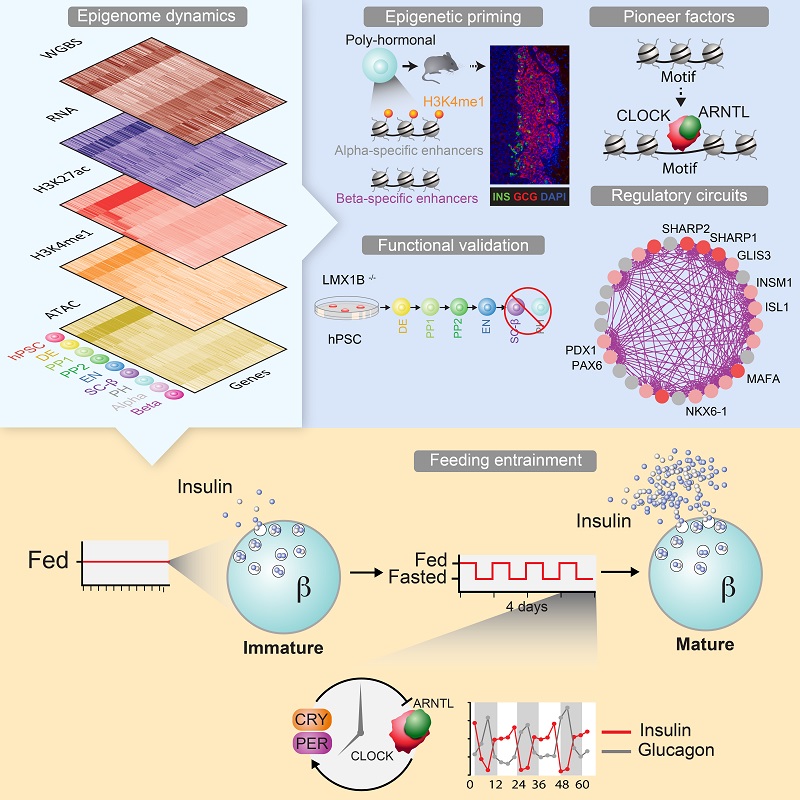
Generating stem cell-derived tissues that recapitulate endogenous organ function remains a major challenge. In the poster report, Alvarez-Dominguez et al. report that entrainment to circadian metabolic rhythms triggers the functional maturation of human stem cell-derived pancreatic islets. The visuals depicts the stepwise development of in vitro islets, with activation of circadian clocks leading to mature insulin responses as a final step.
[View larger visual (scalable on a mobile device) by scrolling down]
--------
Thank you to Juan for answering our questions! The StemJournal article can be viewed here and the StemMeets poster report here.
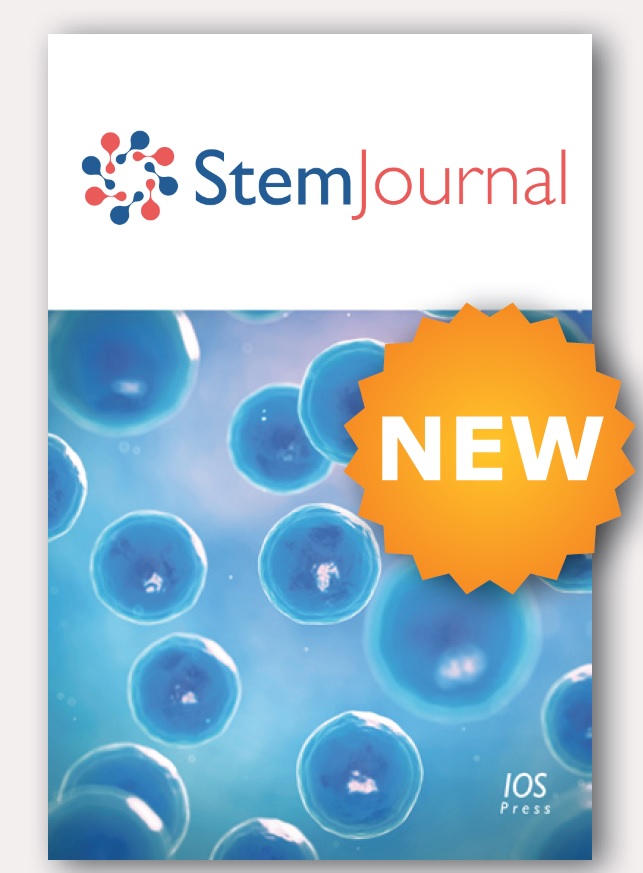
This article is the first poster report to be published in the journal; will yours be the next? Calling all authors who presented a poster at a conference recently wish to submit – either as abstracts or poster reports – see here for full submission guidelines, or contact us if you have queries via: stemjournal@iospress.com

